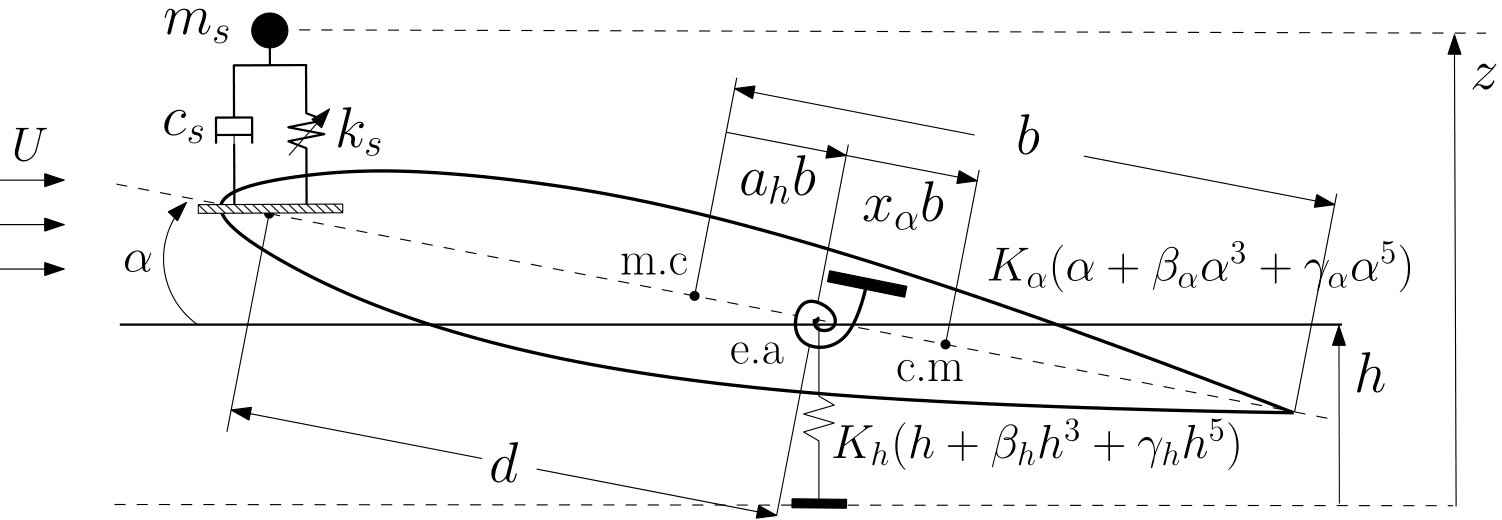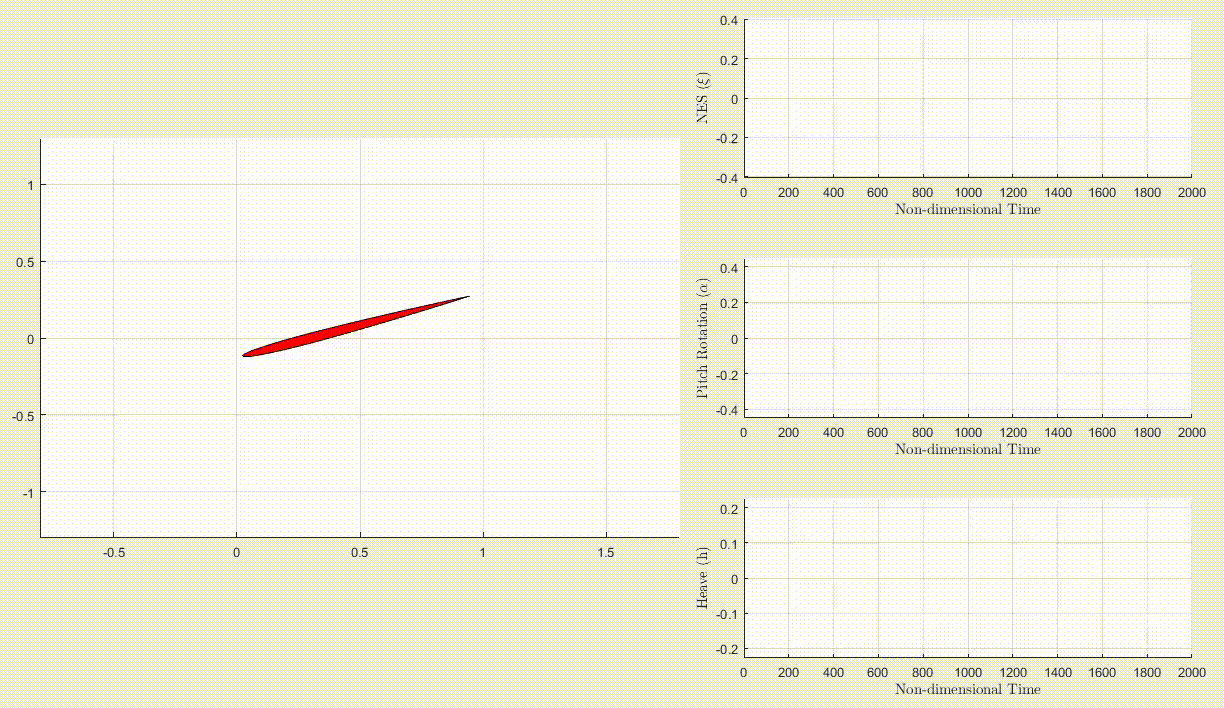Nonlinear Aeroelasticity: Optimal Design under Uncertainty.
This research focuses on the development of a methodology for the reliability-based design optimization (RBDO) of nonlinear aeroelastic problems. The foundation of the methodology is the construction of explicit flutter and subcritical limit cycle oscillations (LCO) boundaries in terms of the design variables. The boundaries, generated using a Support Vector Machine (SVM), can then be used to efficiently evaluate probabilities of failure and solve an RBDO problem.

Movie 1: Example of discontinuous oscillation amplitude for a small change of stiffness (sub-critical LCO). Two dofs system with cubic pich and plunge stiffnesses.
The following figure provides an example of application of the methodology to a two degree-of-freedom airfoil (pitch and plunge) with nonlinear stiffnesses. The figure depicts the explicit boundary for subcritical LCO as a function of the angle of attack and the cubic stiffness coefficients in pitch and plunge. The boundary can be efficiently included in a RBDO problem.

Figure 2: Application of the methodology to a two degree-of-freedom airfoil (pitch and plunge) with nonlinear stiffnesses.
Mitigation of Limit Cycle Oscillations using Optimally Designed NES.
This work investigates the mitigation of limit cycle oscillations (LCOs) using optimally designed nonlinear energy sinks (NESs). An optimal NES attached to a nonlinear wing is observed to capture vibrational eneergy through a phenomenon called 'Target energy transfer' and dissipate it via damping. In this work, NES is tunned with a stochastic optimization algorithm while accounting for various sources of uncertainties, including initial and loading conditions. In addition, this optimization approach is also tailored to handle potential discontinuities in the response of the airfoil.

Figure 1: Nonlinear 2-DOF airfoil model with a NES attachment.

Movie 2: Animation showing the ability of a optimally designed NES to completely suppress the sub-critical limit cycle oscillations.
References:
, “Construction of Aeroelastic Stability Boundaries Using a Multi-Fidelity Approach”, Proceedings of the 53rd AIAA/ASME/ASCE/AHS/ASC Structures, Structural Dynamics and Materials Conference, 2012.
, “Stochastic Optimization of Nonlinear Energy Sinks for the Mitigation of Limit Cycle Oscillations”, AIAA Journal, vol. 57, 2019, pp. 2134-2144.
Theme by Danetsoft and Danang Probo Sayekti inspired by Maksimer

